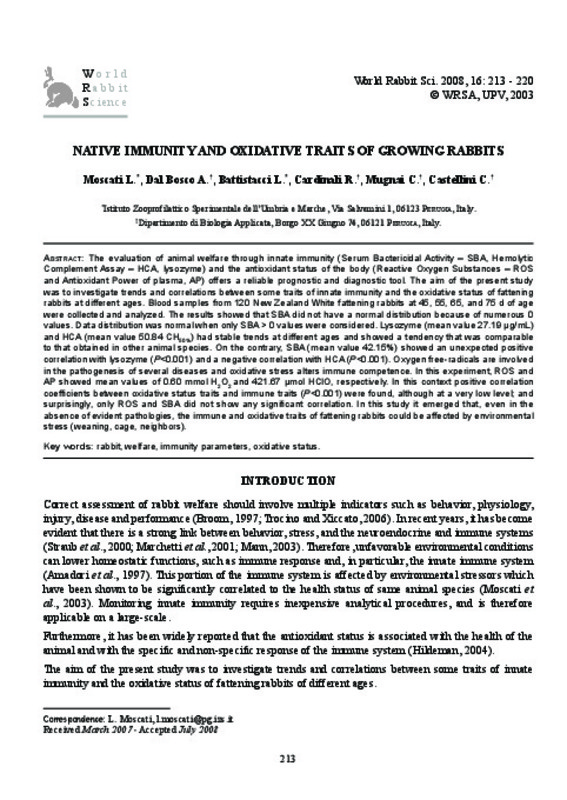JavaScript is disabled for your browser. Some features of this site may not work without it.
Buscar en RiuNet
Listar
Mi cuenta
Estadísticas
Ayuda RiuNet
Admin. UPV
Native immunity and oxidative traits of growing rabbits
Mostrar el registro completo del ítem
Moscati, L.; Dal Bosco, A.; Battistacci, L.; Cardinali, R.; Mugnai, C.; Castellini, C. (2008). Native immunity and oxidative traits of growing rabbits. World Rabbit Science. 16(4). https://doi.org/10.4995/wrs.2008.616
Por favor, use este identificador para citar o enlazar este ítem: http://hdl.handle.net/10251/9512
Ficheros en el ítem
Metadatos del ítem
| Título: | Native immunity and oxidative traits of growing rabbits | |
| Autor: | Moscati, L. Dal Bosco, A. Battistacci, L. Cardinali, R. Mugnai, C. Castellini, C. | |
| Fecha difusión: |
|
|
| Resumen: |
[EN] The evaluation of animal welfare through innate immunity (Serum Bactericidal Activity - SBA, Hemolytic Complement Assay - HCA, lysozyme) and the antioxidant status of the body (Reactive Oxygen Substances - ROS and ...[+]
|
|
| Palabras clave: |
|
|
| Derechos de uso: | Reserva de todos los derechos | |
| Fuente: |
|
|
| DOI: |
|
|
| Editorial: |
|
|
| Versión del editor: | https://doi.org/10.4995/wrs.2008.616 | |
| Agradecimientos: |
|
|
| Tipo: |
|








